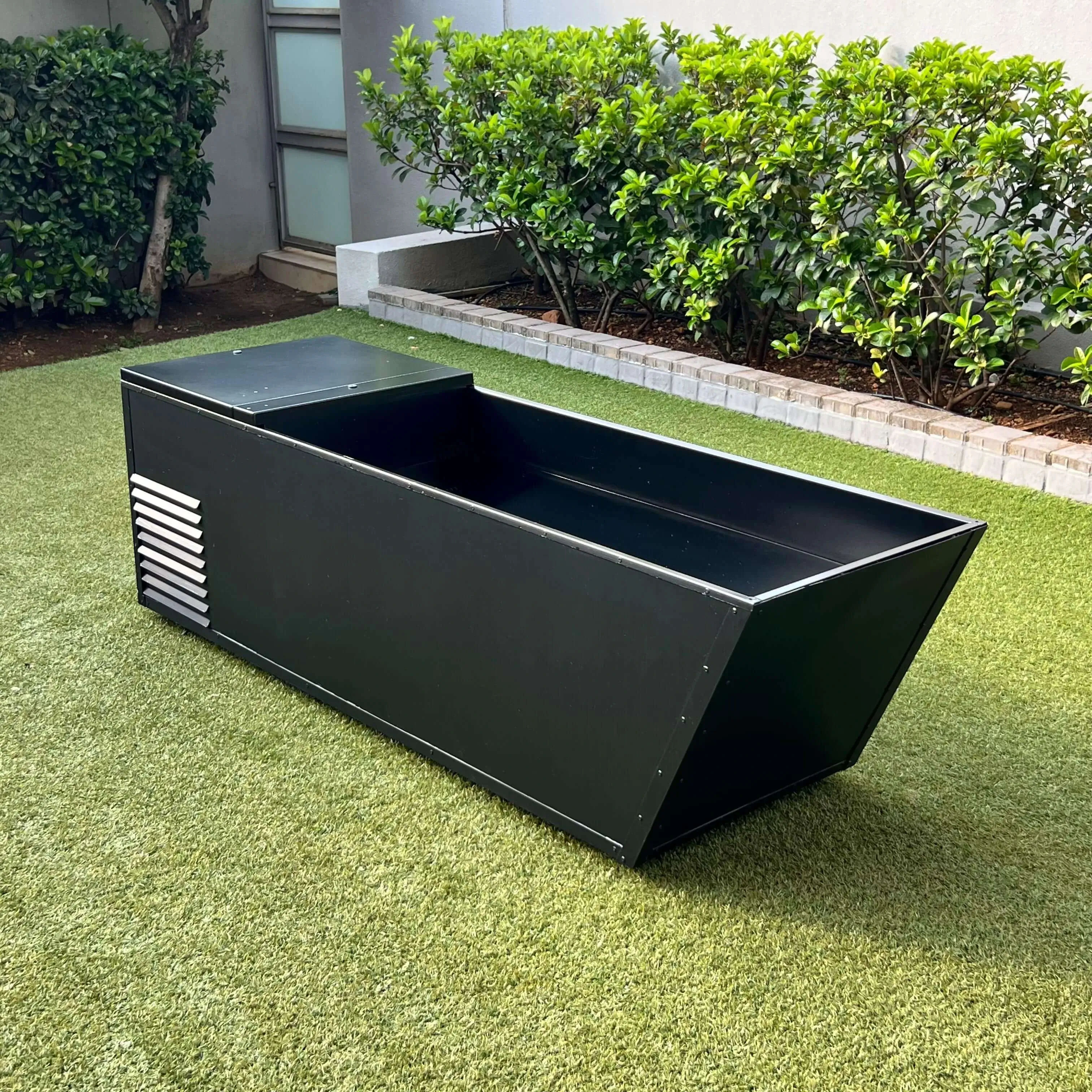Cold plunge (Ice bath) therapy
Sessions can be booked for 15mins
Cold water immersion therapy helps reduce muscle soreness (DOMS) and inflammation by constricting blood vessels, flushing out metabolic waste, and improving circulation post-recovery. Cold immersion also boosts recovery time after intense aerobic physical exertion, enhances the immune response, and upregulates the body's baseline dopamine levels, which helps with mental clarity, focus and energy throughout the day. It has also been shown to improve sleep and help overcome addictions.

Indications (When to make use of this therapy):
- Muscle soreness (DOMS) relief
- Inflammation reduction
- Injury recovery (e.g., sprains, strains)
- Post-exercise recovery
- Pain management (e.g., arthritis or chronic pain syndrome)
- Swelling or oedema
- Mental fog or tiredness
- Decreased drive and motivation
Contraindications (When to avoid this therapy):
- Raynaud's disease
- Poor circulation or vascular issues
- Cardiovascular conditions (e.g., hypertension)
- Hypersensitivity to cold
- Open wounds or skin infections
- Peripheral neuropathy
- Respiratory conditions (e.g., asthma)
- History of cold related injuries
- Pregnancy (with caution)
Frequently Asked Questions:
We keep our ice bath between 8-10 degrees Celsius
The recommended plunge time is between 5-15 minutes. Exceeding this can lead to excessive cooling and potential injury, so monitoring your tolerance and time is important. Stay in long enough to be uncomfortably cold, as long as you can safely do so, try to get to the point of shivering if you can.
Generally, yes, but those with heart conditions, poor circulation, or conditions like Raynaud's disease should seek medical advice first. Cold therapy can stress the cardiovascular system.
For lifestyle use:
Mornings are the best as this can help to upregulate the brain's baseline dopamine levels and get the body's thermoregulatory control centre switched on, which leads to more energy and focus throughout the day.
For recovery:
After a long aerobic exercise is very beneficial (Not within 8 hours after heavy resistance training).
Mornings are the best as this can help to upregulate the brain's baseline dopamine levels and get the body's thermoregulatory control centre switched on, which leads to more energy and focus throughout the day.
For recovery:
After a long aerobic exercise is very beneficial (Not within 8 hours after heavy resistance training).
Taking an ice bath within 30 minutes after aerobic exercise can effectively reduce soreness and help flush out metabolic waste. For lifestyle use, mornings work best.
Prolonged exposure can lead to numbness, tingling, or even dizziness. Gradually increasing your tolerance and timing sessions carefully can help manage these risks.
This depends on your activity level. Most athletes find 2-4 sessions per week helpful during their in-season
Ice baths involve water immersion, while cryotherapy uses cold air to expose the body. Both reduce inflammation, but ice baths are more affordable and accessible, while cryotherapy is often quicker and less physically demanding. In addition, the benefits of cold exposure through ice baths are more established through research than cryotherapy.
No, as long as you're in good health, ice baths shouldn't compromise immunity. In fact, they may strengthen immunity and improve circulation
Contact Us
Our Policies, Terms & Conditions
© Copyright 2025, All Rights Reserved
Site built and managed by Rock Solid Studios
Site built and managed by Rock Solid Studios
.webp)